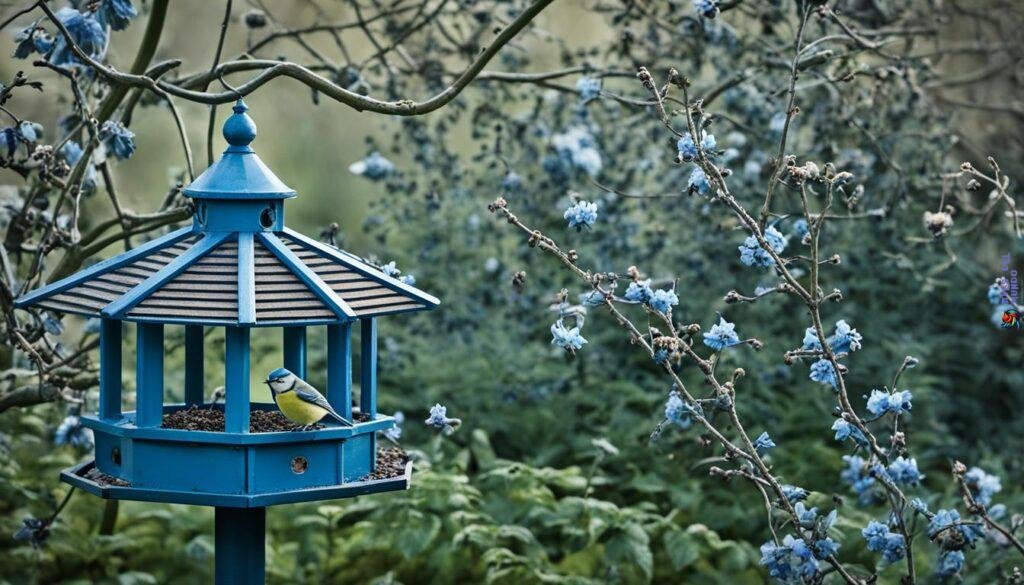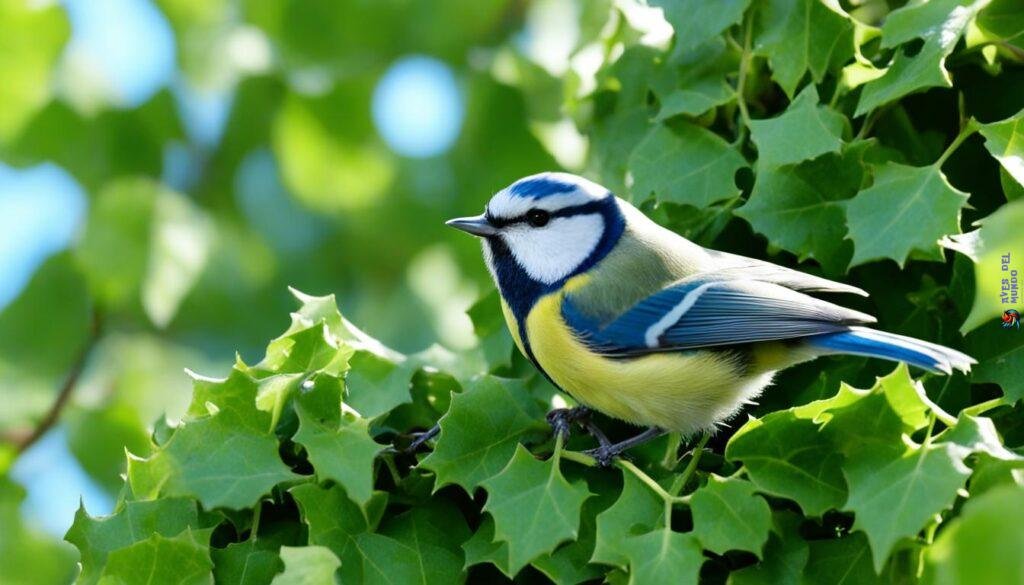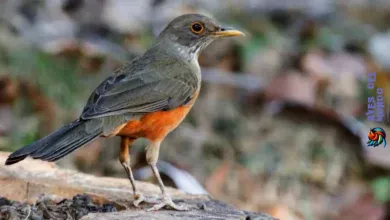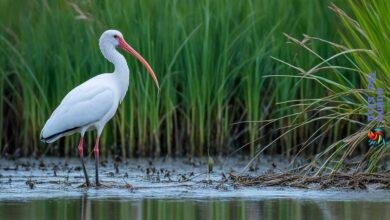Welcome to our guide on understanding the behavior and habitat of the Blue Tit. This small bird, known for its vibrant blue cap and wings, white cheeks, and yellow body, is one of the most common species of tits found in the UK. You can often spot these delightful creatures in your very own garden, showcasing their impressive acrobatic skills as they feed from bird feeders.
Blue Tits have unique behaviors and interesting habitat preferences that make them a fascinating subject to study. In this article, we will delve into their nesting and breeding habits, explore their history and population trends, analyze their behavior traits, discuss their diet and preferred food sources, investigate their preferred habitats, examine their nesting behavior, and touch on their conservation status.
Key Takeaways:
- The Blue Tit is a common bird species in the UK, known for its vibrant blue cap and wings, white cheeks, and yellow body.
- Blue Tits showcase their acrobatic skills when obtaining food from bird feeders in gardens.
- They nest in tree holes and nest boxes, laying 5-12 red flecked white eggs that hatch after 14 days of incubation.
- Blue Tits have a varied diet, feeding on small insects, caterpillars, spiders, and invertebrates, as well as seeds and buds.
- They inhabit deciduous woodlands, gardens, parks, orchards, and hedgerows, seeking out nest boxes and bird feeders for breeding success.
Blue Tit Nesting and Breeding Habits
The Blue Tit, with its vibrant blue cap and wings, is known for its fascinating nesting and breeding habits. Understanding these habits gives us insight into the life cycle of these charming birds.
Nesting Habits
Blue Tits are cavity nesters, utilizing tree holes and nest boxes to create their cozy homes. They typically start nesting from March to June, choosing a secure location to raise their young.
The female Blue Tit takes the lead in nest construction, using moss and dry grass or straw as a base. She meticulously lines the nest with fine materials like hair, grass, wool, and feathers to create a comfortable environment for her eggs and nestlings.
Breeding Habits
After nest construction, the female Blue Tit lays a clutch of 5-12 eggs. These eggs are white with red flecks, providing an eye-catching appearance. The incubation period lasts around 14 days, during which the female diligently keeps the eggs warm.
Once the eggs hatch, the young Blue Tits stay in the nest for approximately 18 days before fledging. At this stage, they are covered in fluffy feathers and are ready to explore the outside world. After another four weeks, they become fully independent.
Blue Tits have the potential to have one or two broods per year, depending on the availability of food. This adaptability allows them to maximize their reproductive success.

| Lifecycle Stage | Timeframe |
|---|---|
| Egg laying | March to June |
| Incubation | Approximately 14 days |
| Fledging | 18 days old |
| Full independence | After 4 weeks |
The nesting and breeding habits of Blue Tits are a testament to their adaptability and resilience. By understanding their life cycle, we can appreciate the intricate balance of nature and the importance of providing suitable habitats for these delightful birds.
Blue Tit History and Population Trends
While the overall population of Blue Tits in the UK has increased over the past 40 years, the number seen in individual gardens has actually declined slightly since the 1970s. This could be because the population is being spread over more gardens due to the growing popularity of feeding garden birds.
Blue Tit Population Trends
Blue Tits (Cyanistes caeruleus) are commonly spotted birds in the UK. They are known for their vibrant blue caps, white cheeks, and yellow bodies. Historically, Blue Tits have thrived in various habitats, including woodlands, parks, gardens, orchards, and hedgerows. Their adaptability and willingness to explore different environments have contributed to their overall population growth in the past few decades.
According to data collected by the British Trust for Ornithology (BTO), the Blue Tit population in the UK has seen a positive upward trend over the last 40 years. This increase can be attributed to several factors, including improved conservation efforts, habitat preservation, and the availability of artificial nesting sites, such as nest boxes, in gardens and woodlands. The increased use of bird feeders and the provision of reliable food sources during winter have also contributed to the birds’ survival and reproduction rates.

Decline in Blue Tits in Gardens
Despite the overall population growth, there has been a slight decline in the number of Blue Tits observed in individual gardens since the 1970s. This decline is likely the result of several factors, including changes in habitat availability, competition with other bird species, and fluctuating food sources.
The decline in Blue Tits in gardens may be partly due to the spreading out of the population across a greater number of gardens, as more people have started providing food and nesting opportunities. This dispersal of Blue Tits across a wider area can result in lower population densities per garden.
Blue Tits are opportunistic feeders and will adjust their foraging behavior based on food availability. Their diet primarily consists of small insects, caterpillars, and spiders during the summer months, but they also rely on supplementary food provided by humans during the winter. Therefore, changes in insect populations or a decrease in the availability of food from bird feeders in gardens could impact the number of Blue Tits choosing to visit gardens.
Overall, while Blue Tits continue to thrive as a species, their declining presence in individual gardens serves as a reminder of the need to maintain diverse habitats and provide adequate food sources to support their populations.
Behavior Traits of Blue Tits
Blue Tits display fascinating behavior traits, which contribute to their adaptability and success in various environments. Let’s explore their feeding habits and group behavior.
Feeding Habits
The Blue Tit is a skilled forager, adept at finding food in diverse settings. During the summer months, their diet primarily consists of small insects, caterpillars, spiders, and other invertebrates. This high-protein diet ensures they have the energy needed for breeding and raising their young.
Image:

In the spring, Blue Tits also consume buds and seeds, making them important contributors to controlling pests in gardens and orchards. However, their feeding preferences are not limited to insects; Blue Tits have been known to cause damage to fruit trees by feeding on the buds.
Group Behavior
Blue Tits are social birds that often engage in feeding activities within small groups. These groups may include other species of tits, creating a dynamic and diverse flock.
Feeding in groups offers several advantages. It allows Blue Tits to share information about food sources, navigate foraging challenges, and provide security through collective vigilance against predators. Group feeding also increases the efficiency of food acquisition, enabling them to cover larger areas and access a wider range of resources.
Blue Tits exemplify the benefits of collective behavior, utilizing their social skills to thrive and adapt in their environment.
Behavior Traits Summary:
- Skilled foragers, feeding on insects and invertebrates during the summer
- Consume buds and seeds in the spring, aiding in pest control but causing potential damage to fruit trees
- Gregarious birds, often engaging in group feeding with other species of tits
- Group feeding facilitates information sharing, safety, and improves overall foraging efficiency
| Blue Tit Behavior Traits | Description |
|---|---|
| Feeding Habits | Blue Tits feed on small insects, caterpillars, spiders, and invertebrates during the summer, while consuming buds and seeds in the spring. They have been known to cause damage to fruit trees. |
| Group Behavior | Blue Tits are social birds that engage in group feeding with other species of tits. Group feeding offers advantages such as information sharing and increased foraging efficiency. |
Blue Tit Diet and Food
Blue Tits have a diverse diet, with their primary food source consisting of small insects, caterpillars, spiders, and invertebrates. However, their feeding preferences extend beyond their natural habitats. In urban and rural areas, Blue Tits are opportunistic and will readily feed in gardens if provided with suitable food.
When attracting Blue Tits to your garden, consider offering foods such as:
- Black sunflower seeds
- Peanuts
- Suet products
This variety of food ensures a varied and wholesome diet for Blue Tits, attracting them to your garden and providing them with essential nutrition.
It should be noted that Blue Tits can be attracted to gardens by offering a diverse range of foods. Providing these foods can significantly contribute to their welfare and survival.
While Blue Tits are beneficial to have in your garden due to their pest control abilities, they can, unfortunately, cause damage to fruit trees. They feed on the buds, causing potential harm to blossoms and affecting overall fruit production.
Remember to provide suitable feeding stations and maintain cleanliness to prevent the spread of diseases among the birds. Regularly clean and disinfect feeders to ensure the health and well-being of the Blue Tits and other bird species in your garden.

Blue Tit Habitat
Blue Tits can be found in a variety of habitats, showcasing their adaptability and versatility. Their preferred habitats include:
- Deciduous and mixed woodlands: Blue Tits thrive in woodland areas with a mix of trees, providing them with ample food sources and nesting opportunities.
- City parks: These urban oases offer Blue Tits a refuge with plenty of trees and green spaces. They can often be spotted flitting amongst the branches.
- Suburban gardens: Blue Tits have become a familiar sight in gardens, attracted by the presence of nest boxes and bird feeders. They seek out these enhanced environments for their breeding success.
- Orchards: The abundance of fruit trees in orchards provides Blue Tits with a diverse food source throughout the year.
- Thickets and hedgerows: These dense, tangled habitats offer Blue Tits protection and a rich supply of insects to forage.

Blue Tits also forage in reedbeds outside of the breeding season. These tall, grassy areas provide them with an abundance of seeds and insects to sustain them during the winter months.
Blue Tit Nesting Behavior
Blue Tits are skilled nest builders that utilize various cavity locations for nesting. They can be found nesting in tree holes, nest boxes, and even holes in walls or poles. These adaptable birds are known for their intricate nest construction and careful selection of materials.
The Blue Tit’s nest is a cup-shaped structure that is built on a base of moss and dry grass or straw. This foundation provides a sturdy structure for the nest. To ensure comfort and insulation, the nest is lined with fine materials such as hair, grass, wool, and feathers. These materials help regulate the temperature inside the nest and provide a soft bed for the eggs and nestlings.
During the breeding season, Blue Tits lay an average of 6-16 white eggs with irregular reddish-brown spots. The number of eggs laid can vary depending on various factors such as food availability and the age of the female. Incubation lasts for approximately 12-16 days, with the female taking the primary responsibility of keeping the eggs warm.
Once the eggs hatch, the nestlings spend an additional 16-23 days in the nest before they are ready to fledge. During this time, both parents diligently feed the growing nestlings, providing them with a diet of insects and caterpillars. The parents make frequent trips to and from the nest, ensuring that their hungry brood is well-nourished and ready to face the world.
| Nest Placement | Nest Description | Nesting Facts |
|---|---|---|
| Tree holes | Cup-shaped nest | 6-16 white eggs with irregular reddish-brown spots |
| Nest boxes | Constructed on a base of moss and dry grass or straw | Incubation period: 12-16 days |
| Holes in walls or poles | Lined with fine materials like hair, grass, wool, and feathers | Nestlings fledge after 16-23 days |

Intricate nest construction, careful material selection, and attentive parental care ensure the successful breeding of Blue Tits.
Conservation Status of Blue Tits
The Blue Tit, with its vibrant blue cap and wings, is a common sight in the UK. But what is the conservation status of this beloved bird? The International Union for Conservation of Nature (IUCN) has classified the Blue Tit as Least Concern due to its large range, increasing population trend, and significant population size.
«The Blue Tit’s conservation status is Least Concern.»
According to estimates, there are approximately 59.7-95.1 million mature Blue Tit individuals in Europe alone.
While the overall population of Blue Tits has been on the rise over the last four decades, there has been a slight decline in the number of Blue Tits seen in individual gardens since the 1970s. This decline may be attributed to the population spreading across more gardens, thanks to the growing popularity of feeding garden birds.
Despite this decline in garden sightings, the Blue Tit population remains robust and thriving. Conservation efforts, including the provision of nest boxes and bird feeders, have contributed to their increasing numbers and sustained population size.
| Conservation Status | Population Size |
|---|---|
| Least Concern | 59.7-95.1 million |
This classification as «Least Concern» provides some reassurance for nature enthusiasts and bird lovers who appreciate the beauty and charm of the Blue Tit. However, continuous efforts must be made to protect their habitats and ensure the availability of food sources to maintain their population and support their well-being.

As we explore more fascinating facts about Blue Tits, let’s delve into their behavior, nesting habits, and diet in the following sections.
Interesting Facts About Blue Tits
Blue Tits are not only beautiful birds but also fascinating creatures with unique behaviors and characteristics. Here are some interesting facts about Blue Tits:
1. Puncturing Milk Bottle Caps: Blue Tits are known for their resourcefulness. They have been observed puncturing milk bottle caps to access the cream. This behavior showcases their intelligence and adaptability when it comes to finding food.
2. Long Lifespan: Blue Tits have a relatively long lifespan compared to other small birds. On average, they can live up to 12 years and 4 months. This longevity is a testament to their ability to thrive in various habitats and withstand different challenges.
3. Climate Change Impact: Climate change has been affecting the nesting cycles of Blue Tits. Warmer spring temperatures have caused earlier breeding seasons and reduced the number of second breeding attempts. This adaptation reflects how even slight changes in the environment can influence the behavior and reproductive patterns of these birds.
Overall, Blue Tits are remarkable creatures with their problem-solving skills, longevity, and ability to adapt to changing environmental conditions. Understanding these cool facts about Blue Tits adds to our appreciation for the natural world and the incredible diversity of bird species.



